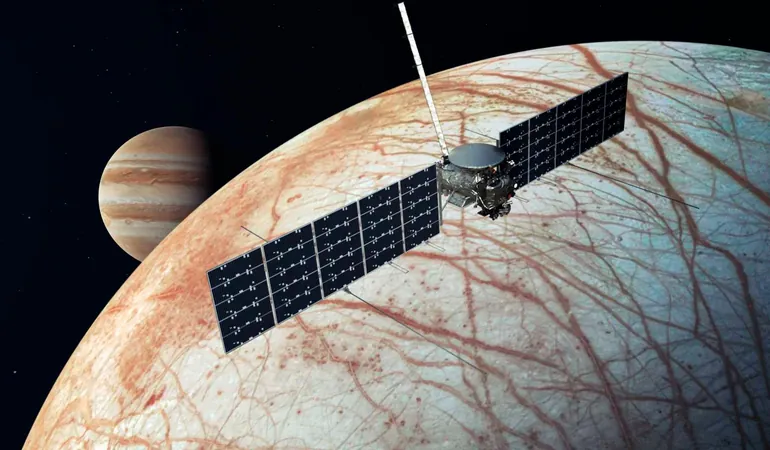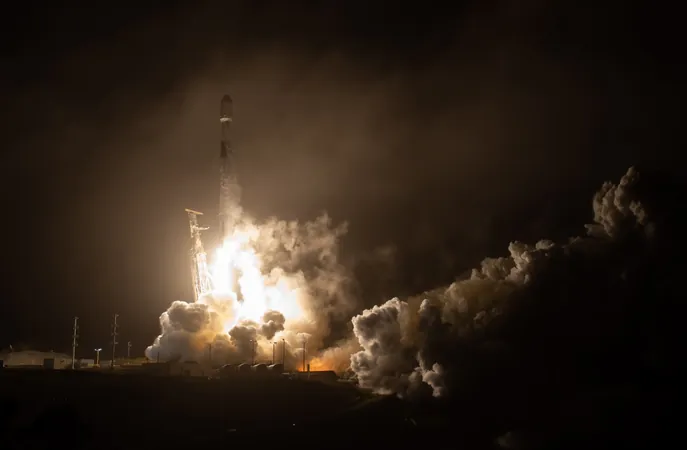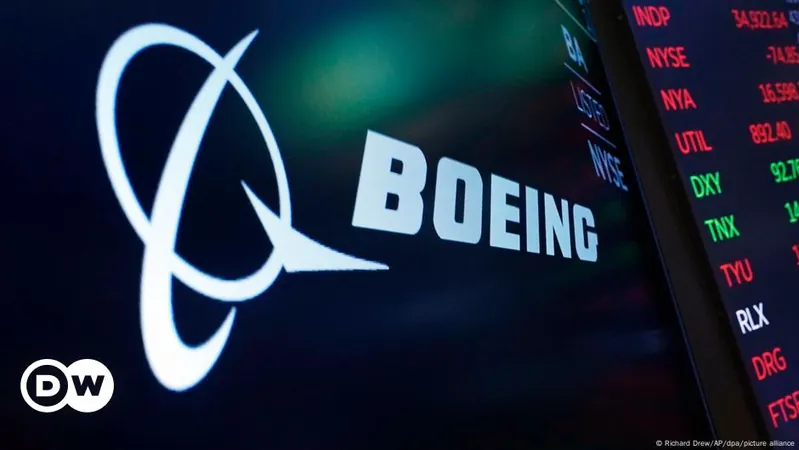
NASA's Bold Journey to Europa Begins: Are We on the Brink of Discovering Alien Life?
2024-10-14
Author: Ming
In an exhilarating leap into the unknown, NASA has officially launched its Europa Clipper spacecraft on a monumental journey that will span nearly six years and cover a staggering 3 billion kilometers (1.8 billion miles). This ambitious mission aims to uncover whether the conditions on Europa, one of Jupiter's iconic moons, can sustain life, potentially harboring a secret deep ocean beneath its icy crust.
The spacecraft lifted off on Monday aboard SpaceX's powerful Falcon Heavy rocket from NASA's launch site on Florida's east coast. This launch faced delays due to the aftereffects of Hurricane Milton, showcasing nature’s unpredictable interference with space exploration. Notably, the blast-off followed closely on the heels of SpaceX's successful fifth Starship test flight, marking an exciting period of achievements for the private aerospace sector.
The Aquatic Mysteries of Europa
Europa, designated as one of Jupiter's 95 moons, captures scientists' imaginations with its intriguing prospects. Research suggests it could possess an ocean reaching up to 120 kilometers (80 miles) deep, shielded beneath a thick layer of ice. This possibility invites speculation about whether life could thrive in such an environment.
A groundbreaking discovery in 2013 by the Hubble Space Telescope brought the moon into sharper focus when it detected what appeared to be geysers erupting from its surface. This phenomenon sparked excitement about potential thermal vents on the ocean floor that could provide energy sources, making Europa a hotspot for astrobiological studies.
Dr. Curt Niebur, a program scientist, shared his enthusiasm, stating, “It’s a chance for us to explore not a world that might have been habitable billions of years ago, but a world that might be habitable today — right now.” Such proclamations heighten anticipation about the mission's implications for our understanding of life's existence beyond Earth.
The Clipper's Journey
The Europa Clipper is not only pivotal for its scientific objectives but also stands as a technological marvel. Measuring about the size of a basketball court, it boasts massive solar panels, making it the largest spacecraft built by NASA for planetary exploration, all while operating on a budget of $5.2 billion.
Unlike earlier missions to Jupiter, the Clipper is specifically designed for an in-depth examination of Europa. It will make close flybys, soaring within approximately 25 kilometers (nearly 16 miles) of the moon's surface. The planned mission trajectory includes 49 close encounters with Europa before concluding in 2034, with a controlled crash into Ganymede, another of Jupiter’s moons.
Previous exploration missions, such as the Pioneer spacecraft and Voyager missions of the 1970s, provided the first distant images of Europa. More recently, NASA's Galileo and Juno spacecraft have approached the moon more closely, teasing out details of its enigmatic surface.
To accomplish its objectives, the Europa Clipper is equipped with an array of nine scientific instruments. These include advanced radar capable of penetrating the icy shell and high-resolution cameras designed to map the moon extensively.
Facing the Challenges
However, the mission is not without its hurdles. One of the major challenges lies in navigating through Jupiter's intense radiation belts, which require the spacecraft's instrumentation to be safeguarded with thick aluminum and zinc walls.
In an exciting parallel endeavor, the European Space Agency’s Juice spacecraft, which was launched last year, is also making its way to Jupiter, promising a comprehensive look at its moon system.
As the Europa Clipper embarks on this groundbreaking mission, the world holds its breath, pondering whether this icy moon could host extraterrestrial life. The tantalizing question on everyone’s mind remains: will we discover that we're not alone in the universe? Stay tuned as we follow this epic adventure into the final frontier!




 Brasil (PT)
Brasil (PT)
 Canada (EN)
Canada (EN)
 Chile (ES)
Chile (ES)
 España (ES)
España (ES)
 France (FR)
France (FR)
 Hong Kong (EN)
Hong Kong (EN)
 Italia (IT)
Italia (IT)
 日本 (JA)
日本 (JA)
 Magyarország (HU)
Magyarország (HU)
 Norge (NO)
Norge (NO)
 Polska (PL)
Polska (PL)
 Schweiz (DE)
Schweiz (DE)
 Singapore (EN)
Singapore (EN)
 Sverige (SV)
Sverige (SV)
 Suomi (FI)
Suomi (FI)
 Türkiye (TR)
Türkiye (TR)